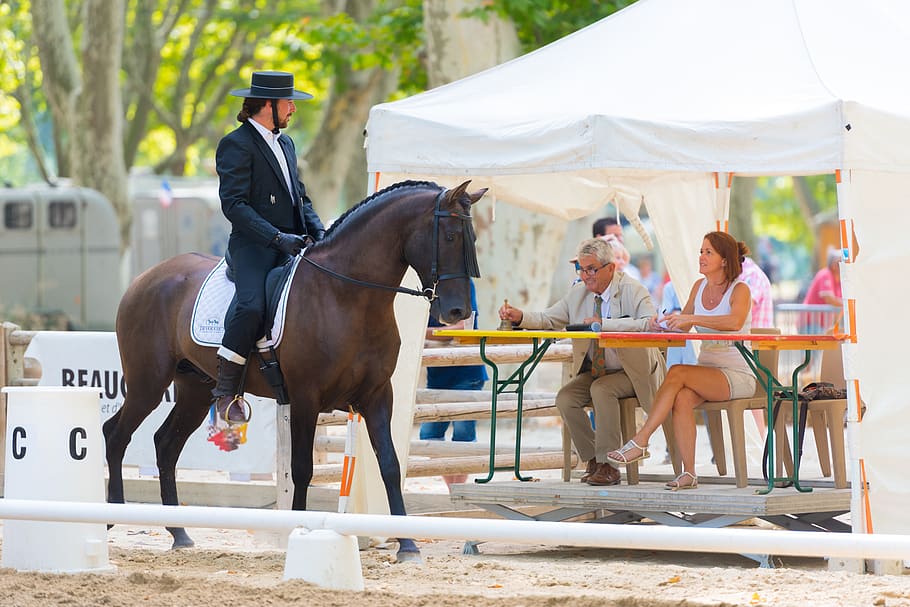If you’re into horse riding, or you know someone who rides, you’ve probably heard the term “dressage” thrown around. Additionally, if you’ve watched the Olympics, you would have noticed dressage as one of the three Olympic equestrian sports (the other two being eventing and jumping).
Dressage itself is a French word, which when translated, means “training,” and it’s considered one of the highest disciplines of horse riding. So let’s take a deeper dive, shall we?
What Is Dressage?
Dressage is an equestrian sport that centers around the horse and rider completing a complete predetermined movement pattern. This is done within a standard arena. Riders need to do this from memory, and it involves years of specific dressage training. Dressage began in the 1500s, and much of what is still taught today was derived from books written back then.
In a competition, the horse and rider complete a formalized sequence of dressage movements. Whilst the rider competes against other riders, the actual dressage test is completed alone in the arena. It is judged against a formal standard rather than scored against the other competitors’ performances.
Another key factor is that rider and horse have to make these movements look effortless.
Movements
There are six specific horse riding techniques, or movements, in dressage that are scored in a competition. They are:
The Passage
This is a collected trot that is elevated and almost rhythmic in movement. The horse’s diagonal pair of feet are alternated as the horse moves forward.
The Piaffe
Another collected trot, much like the Passage; however, this one gives the impression of the horse and rider almost remaining in one place.
The Pirouette
A lateral movement that is executed on a tiny circle. It can be performed in a walk, piaffe, or a canter.
Flying Change of Leg
This movement is the flying change of leg, from canter-left to canter-right (or visa versa). This transition has to be effortless and almost indistinguishable to the watching eye of the judges.
Lateral Movements
These comprise all movements in a direction other than how the horse aligns itself. It can be performed at all gaits (walk, trot, and canter). The standard subcategories are leg yielding, shoulder-in, traverse, and half-pass.
The Half-Pass
An advanced movement to perfect, this is an elegant and impressive movement when performed correctly. It’s often called ‘traversal’ when the movement is performed from one side of the arena to the other.
Learning Dressage
If you’ve spent some time horseback riding, you might want to look into this beautiful discipline with some dressage training. Learning dressage can be very rewarding and challenging to both you – the rider – and your horse, so it’s definitely worth getting a professional to train under.
Dressage also helps the overall physique of your horse by improving muscle condition, flexibility, and soundness.
Don’t Give Up
There are so many different disciplines in the equestrian world including dressage, and whichever you choose to pursue, you and your horse will benefit from the regular training sessions, further increasing the bond you have with your horse.
If you’ve liked this article, have a further look through our Pet Care section.

